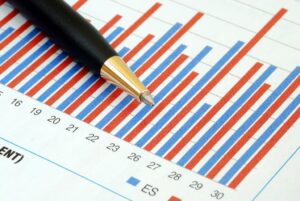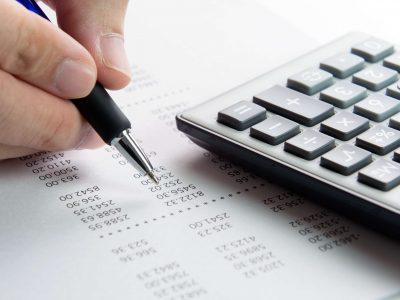
The core difference between FIFO and LIFO lies in which goods they remove from inventory first. LIFO does the opposite how is sales tax calculated – the most recently acquired goods are expensed first. The FIFO (First-In, First-Out) method is an inventory costing approach used in accounting to assign costs to goods sold and ending inventory. For example, if 100 units were purchased for $10 each, then the first sale of 10 units would reduce COGS by $100 (10 x $10) and reduce inventory assets by $100. Remaining inventory stays at the oldest costs while newer purchases take on the newer costs.
- This is frequently the case when the inventory items in question are identical to one another.
- Many businesses use inventory management systems to track purchase dates and quantities.
- The use of FIFO method is very common to compute cost of goods sold and the ending balance of inventory under both perpetual and periodic inventory systems.
- FIFO and LIFO inventory valuations differ because each method makes a different assumption about the units sold.
- The cost of the ending inventory asset, then, is $106, which is the cost of the most recent acquisition.
- The FIFO (First In, First Out) method is an inventory costing method used in accounting to value the cost of goods sold and ending inventory.
First-In, First-Out Inventory (FIFO Inventory)
When calculating inventory and Cost of Goods Sold using LIFO, you use the price of the newest goods in your calculations. As can be seen from above, the inventory cost under FIFO method relates to the cost of the latest purchases, i.e. $70. Following the schedule above, we can calculate the cost of the remaining apples and the cost of goods sold.

Comprehensive Example: Applying FIFO to Financial Analysis
Vaia is a globally recognized educational technology company, offering a holistic learning platform designed for students Bookkeeping for Veterinarians of all ages and educational levels. We offer an extensive library of learning materials, including interactive flashcards, comprehensive textbook solutions, and detailed explanations. The cutting-edge technology and tools we provide help students create their own learning materials. StudySmarter’s content is not only expert-verified but also regularly updated to ensure accuracy and relevance. Gabriel Freitas is an AI Engineer with a solid experience in software development, machine learning algorithms, and generative AI, including large language models’ (LLMs) applications.
Balance sheet shows lower inventory value

Now that we have ending inventory units, we need to place a value based on the FIFO rule. To do that, we need to see the cost of the most recent purchase (i.e., 3 January), which is $4 per unit. As we shall see in the following example, both periodic and perpetual inventory systems provide the same value of ending inventory under the FIFO method. Calculate the value of Bill’s ending inventory on 4 January and the gross profit he earned on the first four days of business using the FIFO method.
- Notice that Susan lists the 130 units remaining in her inventory as costing $4 apiece.
- On the second day, ten units were available, and because all were acquired for the same amount, we assign the cost of the four units sold on that day as $5 each.
- The total COGS according to the FIFO method is the sum of these two, which would be £770.
- This method assumes that inventory purchased or manufactured first is sold first and newer inventory remains unsold.
Introduction to First-In, First-Out (FIFO) Accounting
- It’s one thing to discuss theories, but seeing these theories in action can offer a more comprehensive understanding.
- Specific inventory tracing is an inventory valuation method that tracks the value of every individual piece of inventory.
- As each sale occurs, the cost of goods sold is calculated by removing the oldest item’s costs from the inventory asset account.
- This inventory may include products that are getting processed or are produced but not sold.
- This FIFO calculator will help you determine the value of your remaining inventory and cost of goods sold using the first-in-first-out method.
Understanding these methods is crucial for accountants, supply chain managers, and business owners. By following this tutorial, you can implement FIFO/LIFO calculations in Excel and make informed inventory decisions. As you may have noticed above, with the FIFO method, the ending inventory value will mainly depend on the price change of the units bought over time. Please note how increasing/decreasing inventory prices through time can affect the inventory value. During the CCC, accountants increase the inventory value (during production), and then, when the company sells its products, they reduce the inventory value and increase the COGS value. By using FIFO, the balance sheet shows a better approximation of the market value of inventory.

Create a free account to unlock this Template

The only reason for this is that we are keeping the most expensive items in the inventory account, while the cheapest ones are sold first. The average cost is a third accounting method that calculates inventory cost as the total cost of inventory divided by total units purchased. Most businesses use either FIFO or LIFO, and sole proprietors typically use average cost. Then, since deflation decreases price over time, the ending inventory value will have less economic value.
ExcelDemy is a place where you can learn Excel, and get solutions to your Excel & Excel VBA-related problems, Data Analysis with Excel, etc. We provide tips, how to guide, provide online training, and also provide Excel solutions to your business problems. Take your learning and productivity to the next level with our Premium Templates. CFI is a global provider of financial analyst training and career advancement for finance professionals, including the Financial Modeling & Valuation Analyst (FMVA)® certification program. To learn more and expand your career, explore the additional relevant CFI resources below.

Use the following information to calculate the value of inventory on hand on Mar 31 and cost of goods sold during March in FIFO periodic inventory system and under FIFO perpetual inventory system. Given that the cost of inventory is premised on the most recent purchases, these costs are highly likely to reflect the higher inflationary prices. When a business uses FIFO, the oldest cost of an item in an inventory will be removed first when one of those items is sold. This oldest cost will then be reported on the income statement as part of the cost of goods sold. Imagine a supermarket invoking the FIFO method of fifo method formula inventory management.
The value of the remaining inventory at the end of an accounting period is thus based on the cost of items that were purchased or produced more recently. With this method, companies add up the total cost of goods purchased or produced during a specified time. This amount is then divided by the number of items the company purchased or produced during that same period. To determine the cost of goods sold, the company then multiplies the number of items sold during the period by the average cost per item. Companies frequently use the first in, first out (FIFO) method to determine the cost of goods sold or COGS. The FIFO method assumes the first products a company acquires are also the first products it sells.

